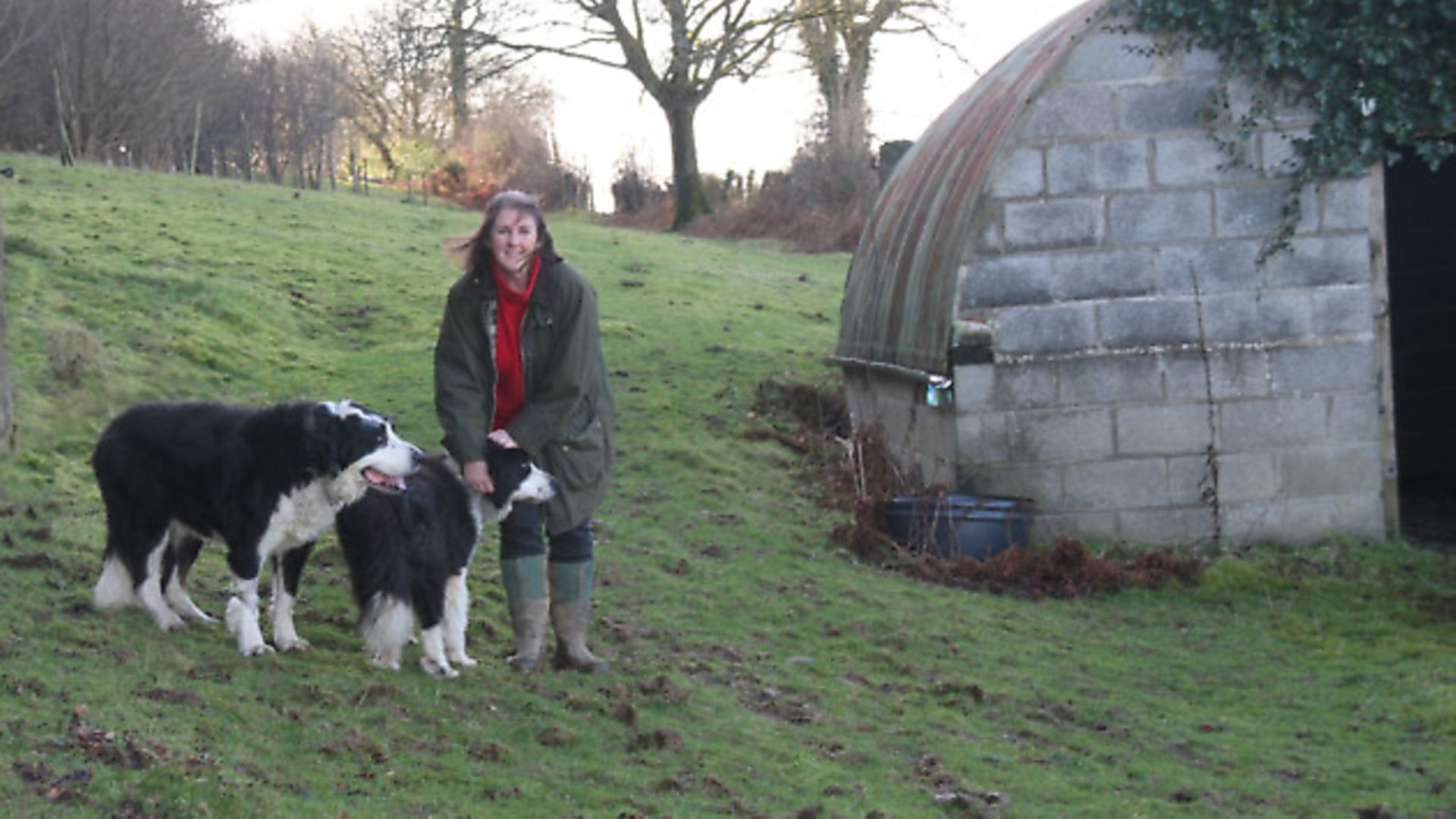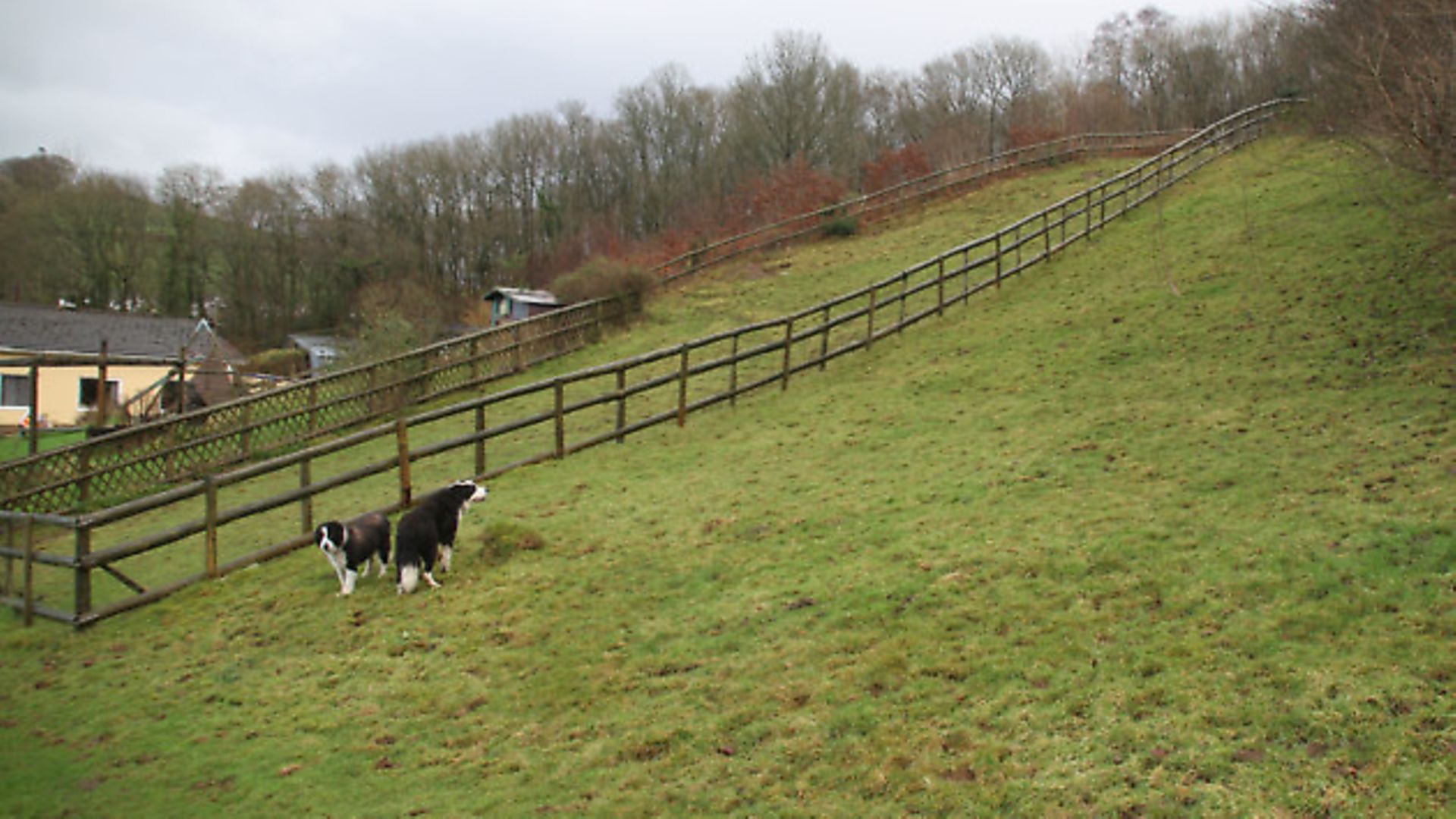Advice from Liz Shankland on narrowing down your search for the perfect property

One of the nicest things about buying a smallholding second time around is that you have a much better idea of what you want.
It’s easy to be bowled over by the beauty of a place when you view it on a lovely sunny day in July (as Gerry and I did when we bought our first holding), but you have to bear in mind that it might not look quite so pretty when you move in towards the end of the year after weeks and weeks of rain have turned the fields into unusable bogland.
One of the huge drawbacks with my old place was that, underground, there was a spidery network of natural springs. On the one hand, it was lovely to know that the taps were pouring out spring water supplied by a borehole (and at a fraction of the cost of mains water) but, on the other hand, the fields needed miles of serious drainage before they could be used for livestock all year round. Initially, we wondered why the previous owners had never bothered to carry out such work. Then it dawned on us that, as dairy farmers, the sogginess of the fields in winter didn’t matter to them because the cows were housed from October to April.

Changing seasons
Choosing a smallholding that works for you – or, at least, one which can be adapted to suit your needs and ambitions – should be a huge part of the decision-making process when you embark on your search. Having just moved to Carmarthenshire, which, like other parts of the UK, has experienced its wettest winter for decades, I have seen thousands of acres of nearby lush green fields transformed into enormous lakes of brown water almost overnight. A day or two of dry weather and the water subsides, but one big flash flood, and it comes rushing back.
Fortunately, the holding I have just bought is on a hill above the flood plains and, seeing how quickly the nice, level fields of my neighbours were rendered useless, I have been counting my blessings. My advice to anyone looking for land has always been to check with the relevant government agency to see whether the area is in a high risk area. I also urge buyers to go for more land than they actually need – whether in an area prone to flooding or not. With the way our weather is changing, with winters staying wetter for much longer than ever before, being able to move stock to fresh ground as required, or having the space to erect barns for winter housing, is essential.
Sometimes, first impressions of a property can be off-putting. When I carried out the initial viewing of my new home, the steepness of some of the paddocks looked rather daunting, and I wondered whether my biggest sows – some of them around 400kg in weight – would be safe on such severe slopes. But the benefits of the holding outweighed its failings. With a little thought and a second viewing, I worked out which parts of the 13-acre site would be most suitable for pigs, decided how I would organise fencing and siting of the arks, and ‘wrote off’ certain areas, leaving those for my sheep to graze.
Devil in the detail
The moral of this particular story is not to discount a property just because it doesn’t immediately appear to suit your needs. With a little thought and ingenuity – and, in my case, a fresh pair of eyes and practical-thinking, supplied by one of my best friends, Chris Impey – what, at first, appears less than ideal can be adapted to be fit for purpose.
Too many people searching for smallholdings do all their shopping online, dismissing properties on the basis of a few photographs and the estate agent’s description. However, in my experience, you have to dig deeper. Ring the estate agent and ask for more information before you book a viewing. The advert for my new holding carried lots of pictures of the interior of the house, but very few outside. The description mentioned ‘a range of useful outbuildings’, but there were pictures of just one barn; as it turned out, there were a total of eight outbuildings, all very good sizes and all in a decent state of repair, considering their age. They were arranged around a kind of courtyard and were all just a few metres from the house, making them ideal for me at farrowing and lambing time, and, being close to the main entrance, would make life easier when receiving bulk deliveries of feed, straw, and building materials.
None of these excellent selling points was mentioned on the estate agent’s website, and I was amazed and delighted when I finally viewed it. To me, the dimensions of each barn would have been far more useful than the flowery descriptions of the living areas of the house and the size of each bedroom. Land information had been sketchy, too; the details mentioned a ‘block of woodland, amounting to eight acres’. Perfect for pigs, I thought – but what the description didn’t add was that the ‘woodland’ not only included native broadleaf trees, but apple, pear, cherry, and plum trees, which would provide a feast for my herd every autumn. What a bonus!
Detective work
Of course, some information may be left out of descriptions – and photographs are often taken from clever angles – to avoid buyers being put off by certain features. You may, for instance, find an electricity pylon, a wind turbine, or a busy industrial estate nearby when you turn up for your viewing. No estate agent in their right mind would mention such things! For this reason, you should do your own research and find out as much as you can about the area.
One of the greatest inventions of recent decades for property-hunters has to be the ‘street view’ services which are easily found on the internet. There are lots of sites – Google Street View being the best-known. You just type in the postcode or street name and up comes an image of the approximate site. Even if you don’t find the exact property, you can swivel the ‘camera’ round 360 degrees to see more, and even zoom up and down streets and roads to see what kind of neighbours you might end up with.
Aerial maps are invaluable, too, offering satellite images which can give you a clear idea of boundaries, land features, major roads, nearby settlements, and commercial operations.
Liz Shankland is the author of the Haynes Smallholding Manual and teaches courses in animal husbandry at www.humblebynature.com
Tips when browsing property ads
? Don’t discount properties over your budget. Estate agents’ websites often make you choose a price bracket to carry out a search, but do look outside your specified range (e.g. if you set parameters of £400,000 to £500,000, also browse from £500,000 to £600,000) because there may be a deal to be done on a more expensive property, for instance, if the vendor wants a quick sale or if the condition of the property makes it unlikely that buyers may get a mortgage.
? Look for more land than you need – partly to give you flexibility for rotating stock in bad weather, but also to allow you room to expand your activities as your plans and ambitions develop.
? Outbuildings should be a high priority if you are planning on livestock. If there aren’t any, make sure there is sufficient land to build, and that you budget for construction work.
? If a property is short on acreage, but everything else suits your needs, don’t dismiss it instantly. Ask the estate agent to contact the vendor and find out if there is any neighbouring land for sale or rent. Even if the additional land is a few metres or a mile or so away, it might still work for you
Image(s) provided by:
Archant
Archant







